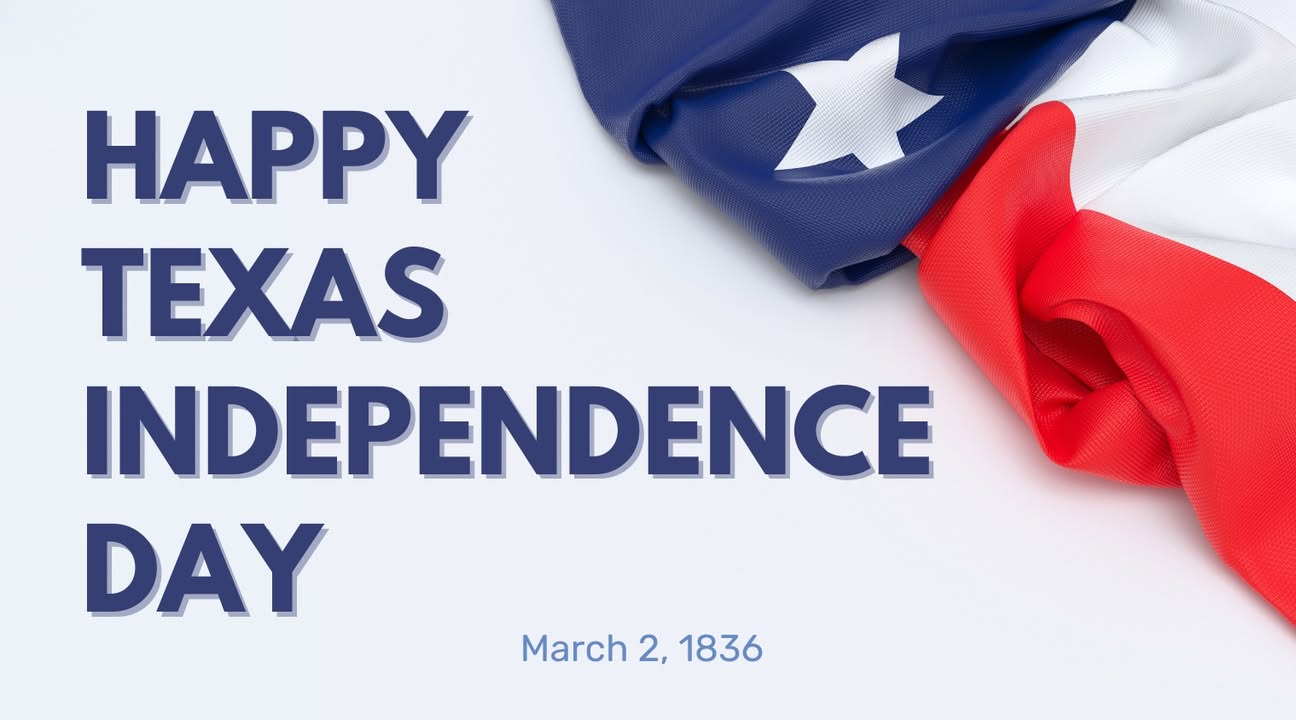March 2, 1836: On this day, a pivotal event unfolded that holds deep significance for both Texans and Americans:
Texas declared its independence from Mexico. This moment marked a turning point in history, profoundly shaping the destinies of Texas, the United States, and the world.
For Texians, March 2, 1836, represented the birth of their Republic. On this day, delegates gathered at the Convention of 1836 at Washington-on-the Brazos and formally adopted the Texas Declaration of Independence. This bold act asserted their right to self-governance, breaking free from Mexican rule amid escalating tensions during the Texas Revolution. The declaration was a unifying call to action, galvanizing Texian settlers—many of whom were Americans who had migrated to the region—in their fight for sovereignty. Just weeks later, on April 21,1836, this resolve led to their decisive victory over Mexican forces at the Battle of San Jacinto. Within hours of that victory, General Santa Anna was captured on land that was located in what is now Pasadena, Texas.
The site later became part of the Champion Paper Mill complex.
There is today a historical marker commemorating Santa Anna’s capture, and I encourage you to go visit it this month in honor of our Independence. Thus, March 2, 1836, stands as the moment when Texas began its journey as an independent nation, a source of pride and identity for Texans to this day. On a personal note of pride, my great, great, great, great grandfather, Thomas Phinley Plaster, manned the twin sister cannons at the Battle of San Jacinto. He was given land by Sam Houston and was one of the first Texas state legislators. He was the door guard at the Capital the year he passed, and he is buried in the State of Texas Cemetery. While the declaration was being signed, the Battle of the Alamo, February 23, 1836 to March 6, 1836, was unfolding in San Antonio. The Alamo’s fall on March 6, 1836, just days later, became a rallying cry for Texian forces, amplifying the declaration’s impact.
Here are important dates and facts in Texas history:
On March 2, 1836, delegates from various Texas settlements convened at Washington-on-the Brazos and unanimously adopted the Texas Declaration of Independence. This document was modeled after the United States Declaration of Independence and was signed by 59 delegates, including figures like Sam Houston, a military leader and later the first president of the Republic of Texas.
Lorenzo de Zavala, a Mexican statesmen who supported the Texian cause and became the Republic’s first vice-president.
George Childress, the primary author of the declaration.
This act formally declared Texas an independent nation, the Republic of Texas, although the fight for independence was not over.
The events of March 2, 1836, were a culmination of growing tensions between the American settlers in Texas (known as Texians) and the Mexican government. The Republic of Texas existed from 1836 to 1845. This paved the way for the Battle of San Jacinto on April 21, 1836, where Sam Houston’s forces defeated Santa Anna’s army, securing Texas independence. After nearly a decade as an independent republic, Texas was annexed by the United States in 1845, becoming the 28th state. This annexation escalated tensions between the U.S. and Mexico, contributing to the Mexican-American War (1846-1848), which reshaped the American Southwest and led to the famous westward expansion of the United States.
March 2, 1836, was a defining moment in Texas and U.S. history.
Author, Karen Hollon – Museum Specialist

